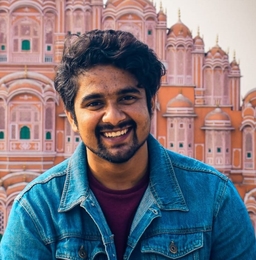Works in Progress: The Long Journey to Doing Good Better

By Kamal Panwar
2024-03-05

When we were starting off in philanthropy, my wife Cari did a listening tour to try to shape our strategy. We were trying to learn some basic principles about choosing cause areas and tactics — how can we do a good job as philanthropists and as stewards of this capital? Almost universally, people would coach us that this was largely about personal interest — what were we passionate about? We knew we wanted to help people. We knew we wanted to avoid bureaucracy and waste and do things that achieved efficient impact. In business, I was used to allocating a budget by sorting a list of possibilities based on their relative impact, and I thought I could expect something similar in philanthropy. Our foundation, Good Ventures , was an opportunity to have impact in a leveraged way, at massive scale, as long as we chose these areas purposefully and thoughtfully. To be clear, it was common for other philanthropists and their consultants to think strategically, too, after they had chosen a focus area (or areas). But we couldn’t find anyone accustomed to thinking strategically before choosing focus areas — a concept we now refer to as strategic cause selection . We didn’t know that it would be so hard to find someone who could help us answer the most important questions as we understood them. In 2010, as part of Cari’s journey walking the connections between ideas and people, we met Holden Karnofsky and Elie Hassenfeld. They had embarked on a similar research endeavor after earning some savings earlier in their careers. At first, they thought that it would be easy to find answers to their questions about effectiveness, but they were hindered again and again by a lack of concrete, well-organized, public information as well as prior research comparing outcomes across cause areas. Eventually, they founded a new organization to create the resource they were missing: GiveWell . We started working together because we were all interested in the same question: how do we do the most good that we can? Over the years a community has developed, effective altruism, that’s dedicated to this question, though in practice it’s composed of a variety of groups and beliefs, with direct and indirect ties to the core research project. In my mind, the distinctions between these groups come from two places: differing answers on “how”, and differing perspectives on “the most good.” What they’re anchored in is the desire to figure out what is a wise way to give and when you put it that way, that is absolutely the right question to ask. — Chris Anderson Effective altruism as a question isn’t prescriptive, which means everybody engages in their own way. When I think of how I relate to people interested in effective altruism, it is that we share a common interest in investigating this question, and actually doing the work that goes into resolving it, rather than that we have a common set of answers. There is a fascination and a shared curiosity — indeed, you often find the same member of the community vacillating between points of views and even hedging how they donate (i.e. “a portfolio approach”). When a group has a shared sense of identity, the people within it are still not all one thing, a homogenous group with one big set of shared beliefs — and yet they often are perceived that way. Necessarily, the way that you engage in characterizing a group is by giving it broad, sweeping attributes that describe how the people in the group are similar, or distinctive relative to the broader world. As an individual within a group trying to understand yourself, however, this gets flipped, and you can more easily see how you differ. Any one of those sweeping attributes do apply to some of the group, and it’s hard to identify with the group when you clearly don’t identify with many of the individuals, in particular the ones with the strongest beliefs. I often observe that the people with the most fringe opinions inside a group paradoxically get the most visibility outside the group, precisely because they are saying something unfamiliar and controversial.